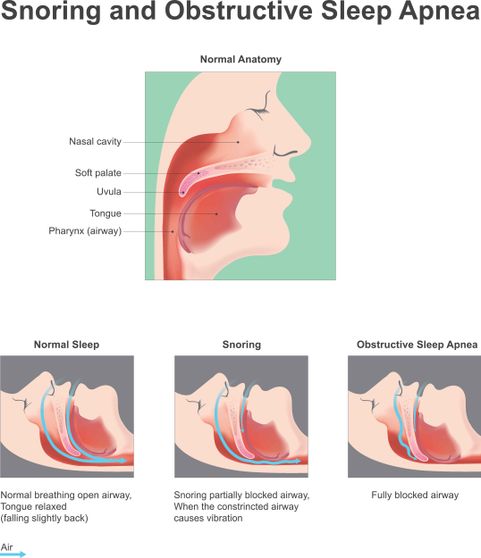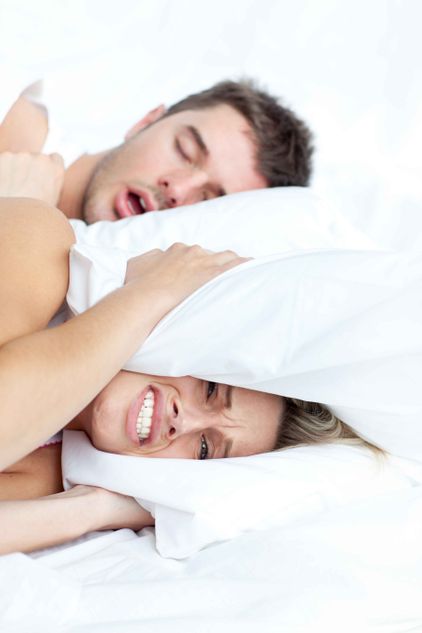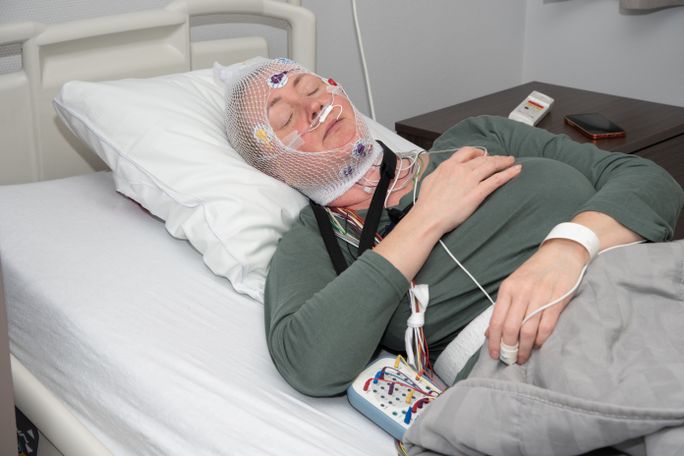Several factors can contribute to the development of sleep apnoea. Obesity or excess weight is a leading cause, along with age, as the condition is more common in people over 40. Men are more likely to develop sleep apnoea than women, and a family history of the condition can increase the risk. Lifestyle choices, such as smoking and alcohol use, also play a role, as well as medical conditions like nasal congestion, high blood pressure, or diabetes.


Snoring is the sound produced when the flow of air through the mouth and nose is partially obstructed during sleep. This obstruction causes the tissues in the throat, such as the soft palate, uvula, and the base of the tongue, to vibrate as air passes over them. The sound of snoring can vary from a soft, raspy noise to a loud, disruptive roar, depending on the degree of airway obstruction and the specific tissues involved.
One of the most significant risks of untreated sleep apnoea is an increased risk of cardiovascular disease. People with untreated sleep apnoea have an increased risk of developing high blood pressure, heart attack, and stroke. This is because the repeated breathing interruptions during sleep cause a decrease in oxygen levels in the blood, which can put a strain on the cardiovascular system.
Untreated sleep apnoea is also linked to an increased risk of developing type 2 diabetes. The decrease in oxygen levels caused by sleep apnoea can affect the body's ability to regulate blood sugar levels. This, in turn, can lead to insulin resistance and an increased risk of developing type 2 diabetes.
Untreated sleep apnoea can also lead to weight gain. This is because sleep apnea disrupts the normal sleep cycle, leading to an increase in appetite hormones and a decrease in the hormones that regulate appetite. This can cause people with sleep apnoea to eat more than they need, leading to weight gain and an increased risk of obesity.
Sleep apnoea can also have a negative impact on mental health. People with sleep apnoea are more likely to experience depression and anxiety than those without sleep apnoea. This is thought to be because sleep disturbances can disrupt the normal production of neurotransmitters that regulate mood.
Untreated sleep apnoea can also have a negative impact on cognitive function. People with sleep apnea may experience difficulty with memory, attention, and concentration. This can lead to difficulties in the workplace or in academic settings.
Sleep debt is the difference between how much sleep your body needs and how much you actually get. When you consistently don’t get enough sleep because of sleep apnoea, this "debt" builds up, leading to tiredness, trouble concentrating, and mood changes.

Sleep studies, also known as polysomnography, are tests used to diagnose sleep disorders, including sleep apnoea. Depending on the patient’s symptoms and medical history, different types of sleep studies can be conducted.
The most common types of sleep studies are the Lab Studies and the Home Studies:
In-lab sleep study: An in-lab sleep study is conducted in a sleep clinic or hospital. During the study, the patient spends the night in a sleep lab monitored by a sleep technician. The sleep scientist places electrodes on the patient’s scalp, face, chest, and limbs to measure brain activity, heart rate, oxygen levels, and other physiological functions. The sleep scientist also observes the patient’s breathing and body movements.
Home sleep study: A home sleep study is a portable version of the in-lab sleep study that can be conducted in the patient’s home. The patient will be will be provided with a device they wear on their wrist or finger and usually a sensor around their chest to monitor breathing patterns and oxygen levels. The patient will be instructed on how to set up and use the device and will return it to the sleep clinic for analysis the next day.
We are currently operating at our sister dental clinic “The Smile Place Mt Eliza”